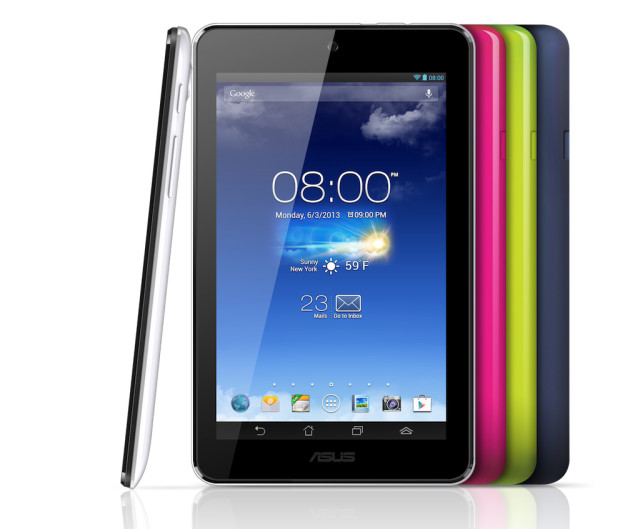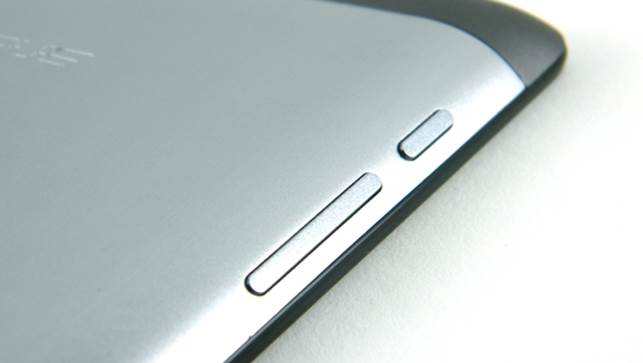The ASUS Fonepad 7 offers the real estate
of a tablet while carrying basic smartphone features. It's a refreshed version
of the original Fonepad, the second in its class, and has retained a few specs
like the Intel processor and voice-calling support, all while ironing out a few
kinks.

Asus
Fonepad 7 Review
In terms of hardware, this Android
4.3-based device has a 7-inch IPS touchscreen display with a 1280 x 800-pixel
resolution. The display is vivid and color reproduction is good, though we
found it to be a bit too reflective when used under the sun. Its dual- core
Intel CPU is complemented by a PowerVR GPU and 1GB of RAM. It comes with 8GB of
built-in storage that is expandable up to 64GB using a microSD card.
Its hardware is housed in a hard,
all-plastic case, which we think ASUS has brought down a notch, since the
original Fonepad had a brushed aluminum finish at the back. Still, the new
Fonepad feels solid and sturdy. The case is fixed, which means that the battery
is non-removable. The pattern on its rear side gives it a nice aesthetic touch.

Asus
has located the power button and the volume rocker on the left edge near the
top of the tablet
The Fonepad 7 carries two cameras: a
1.2-megapixel front-facing camera and a 5-megapixel main camera. The front
camera’s image quality is sufficient for video chat; for snapshots, the main
camera does a decent job, though it falls short at times, lacking contrast and
producing indoor shots with noticeable noise.
Running on a dual-core Intel CPU, it may
seem underpowered compared to the quad- and octa-cores used by other mobile
devices; however, its Intel processor can definitely deliver. It scored 14201
on AnTuTu Benchmark and 6749 on Quadrant Standard. We were impressed by its
smooth day-to-day performance with negligible lags. Web browsing was fluid, and
so was running various apps. It can also easily handle games like Temple Run
and Clash of Clans.
On the audio front, it didn’t impress us
much because it didn’t have the dual-front speakers found on its predecessor.
There were times when the sound wasn’t loud enough; at maximum volume, the
audio tended to break. Moreover, it doesn’t ship with earphones.
Its 3910mAh battery lasted long enough.
After testing, its power lived for a day on a single charge with moderate use.
The Asus Fonepad 7 didn’t disappoint in
terms of speed, whether gaming, browsing, or handing apps and multimedia. The
touch experience on its display is also very intuitive. Though it falls short
on build and audio quality compared to the first Fonepad, it’s still a
recommendable device.

The
only two ports on the device are the micro USB port and the 3.5mm headphone
jack. These are both found on the bottom of the tablet with the headphone jack
to the left of the charging port
At a glance ·
Processor: Intel Atom Z2520 (Dual-core,
1.2GHz) ·
Camera: 5MP (Main), 1.2MP (Front) ·
Display: 7" IPS LCD (1280 X 800) ·
Operating system: Android 4.3 Jelly Bean ·
Price: USD 202.47 Specifications ·
Memory: 1GB RAM ·
Storage: 8GB internal storage, expandable up
to 64GB via microSD ·
Wireless Connectivity: Wi-Fi a/b/g/n,
Bluetooth 4.0, GPS ·
Battery: 3910mAh ·
Dimensions: 199.5 x 120.8 x 11.35mm ·
Weight: 340g Verdict: 8.5 ·
Physique: 8.0 ·
Features: 9.0 ·
User-friendliness: 8.0 ·
Performance: 8.5 ·
Value: 8.5
|